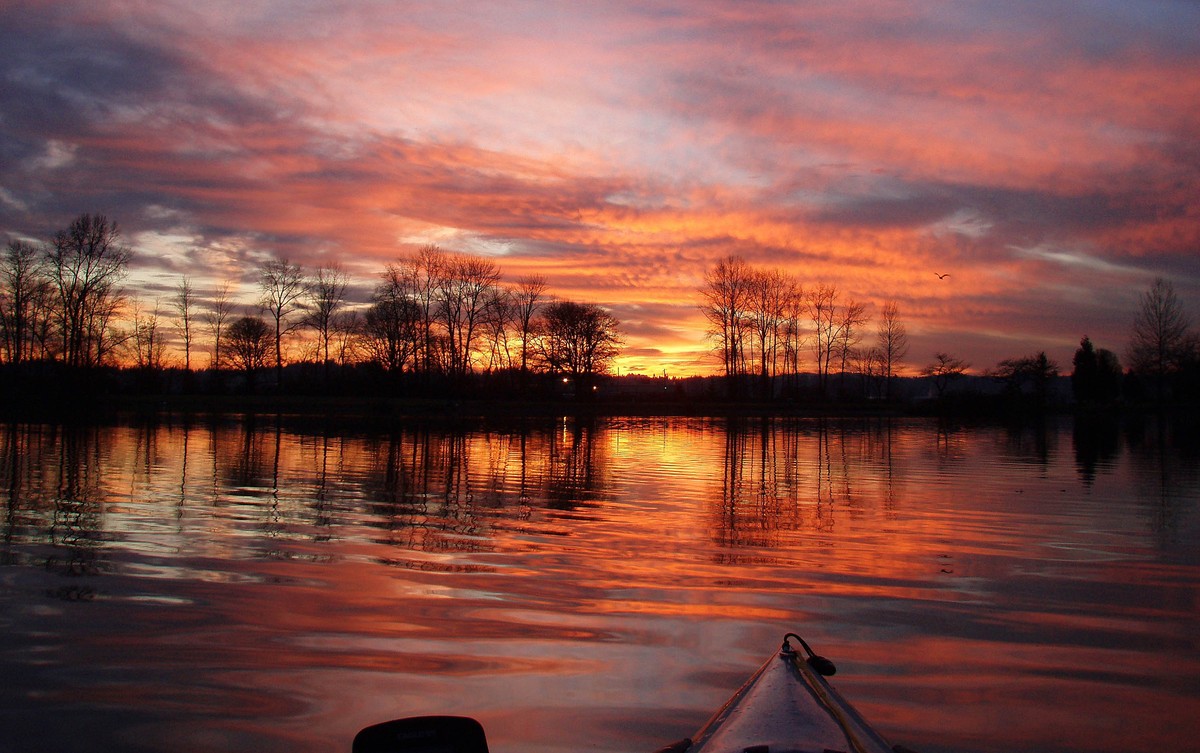Fishing the cold months certainly has its advantages. Most noticeable is the lack of crowds. This translates to all sorts of good things, such as more parking, less boat traffic and fewer boat wakes, and best of all, fewer people fishing in your favorite spots!
One of my favorite parts of getting out on the water during the colder months is seeing the spectacular sunrises and sunsets. The cleaner atmosphere paired with the lower angle of the sun during this part of the year provide the best conditions for breathtaking displays of pinks, reds, and oranges in the sky.
Here’s how to dress for the frigid conditions.

Start with the Base
It’s important to have quality base layers that will wick water away from your skin instead of hold it in. For example, cotton will not wick water and leave you feeling damp and cold after you inevitably work up a little bit of a sweat while moving from spot to spot then rest to fish. This damp feeling will likely end your day more quickly than you would prefer.
Instead, go for base layers made with either wool or synthetic materials, such as a polyester based product. Base layers should also be fairly form fitting so as not to bunch up underneath your other layers but not too tight to avoid loss of circulation. When layering over base layers look for a zip-up fleece and some fleece pants. I like to cut a few inches off the bottom of my fleece pants so they don’t bunch up too much.
Immersion Layer
By far the best protection from the elements you can get is a good quality drysuit. Drysuits come in a wide variety of features and materials so it’s easy to get overwhelmed but some of the main features that can be used to narrow down a search are breathability, neck and wrist material, and durability features. Breathability is typically the main distinguishing factor for drysuits. A suit made with a highly breathable material, such as Gore-Tex, will cost quite a bit more than a suit made from a generic 2 or 3 layer breathable material, but if you’re going to spend a lot of time in the suit it is well worth it in my book.
Neck and wrist gasket material is another tradeoff that needs to be considered when researching drysuits. Indeed, latex gaskets provide the best protection against water intrusion but while neoprene gaskets don’t technically provide a watertight seal, many users tend to feel that the seal they do provide is sufficient for the increased level of comfort. A nice durability feature to look for is reinforcement material on the legs of the suit. There are plenty of drysuit makes and models to choose from but my suit of choice is a Gore-Tex Meridian made by Kokatat.
Waders
An inexpensive but adequate option for immersion wear is a pair of breathable waders paired with a breathable dry top. Be sure to wear a wading belt with this setup as an extra safety measure. This is a great option since plenty of fishermen already have a set of waders and there are great deals that can be found on both waders or dry tops, especially around the holidays.

Gloves
If you pop open a desktop computer you’ll notice plenty of heat sinks. Heat sinks are the metal pieces with a multitude fins that are placed on top of components that produce a lot of heat in order to channel that heat away from the component and disperse it into the air. It turns out, humans have built in heat sinks: their hands and feet. Human hands and feet are pretty efficient at dispersing heat because of how much surface area they have and how far they are from the core. This idea is intensely noticeable on a cold and breezy day.
When it comes to gloves, material matters the same way it does with base layers. Go for wools or synthetic materials, like fleece, so when they inevitability get wet, they won’t feel as cold on your skin. Some nice features look for on gloves are a fleece lining and slit fingers that bend back and stick to velcro on the back of the finger, which makes for easy knot tying.
Footwear
When it comes to footwear, I like to wear thick wool socks under the feet of my drysuit. And while your feet can get cold from a lack of sufficient insulation, they can also get cold from a lack of circulation so make sure your footwear is not too tight. Along these same lines, if you fish from a Hobie kayak that has a lower seat like I do in my Revolution 13, it helps to take a break from pedaling in cold conditions and pick up that paddle. Just like tight footwear, having your feet elevated on the pedals can also decrease the circulation to your feet over time.
If you’re looking for beautiful, quiet scenery and empty fishing spots, don’t let the cold stop you from getting out on the water this winter!
Check back weekly for new videos and stories by the 2016 Hobie Fishing Top Guns.
